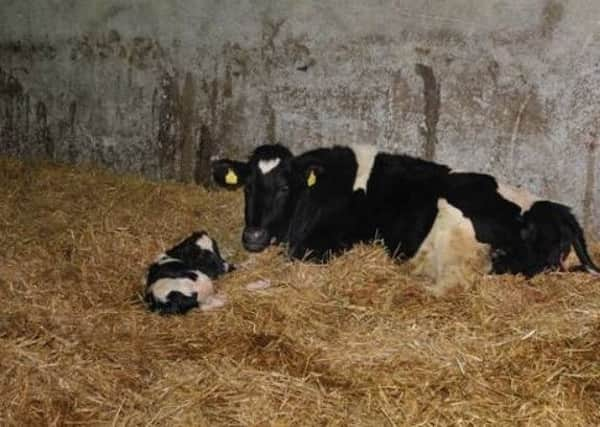Subclinical Milk Fever – a potential hidden loss for dairy herds


Just prior to calving a dairy cow will deposit 8-10g/d of calcium into her calf however when she calves 20-30g/d are secreted into colostrum and milk – an increase of two to three fold.
To achieve this the dairy cow must make metabolic adaptations to support the increased need for calcium, if this is not achieved soon enough or of sufficient magnitude, blood calcium levels drop below a critical threshold and clinical or subclinical hypocalcaemia (milk fever).
Advertisement
Hide AdAdvertisement
Hide AdClinical hypocalcemia is one of the most commonly recognised diseases by dairy farmers, with signs such as nervousness, excitability and eventually inability to stand. However subclinical hypocalcemia, where cows have a low blood concentration of calcium (e.g. <8.0mg/dl) within 24 hours of calving without clinical symptoms, is considered much more common with studies suggesting that 50% of mature dairy cows could be experiencing this.
Cows with lower blood calcium concentrations within 24 hours after calving are more likely to have ketosis, retained foetal membranes, displaced abomasums and metritis.
The concentration of calcium in blood is regulated by two hormones – parathyroid hormone (PTH) and 1,25-dihydrox vitamin D3. PTH acts at the kidney when the concentration of calcium decreases in the blood to reduce the excretion of calcium in the urine. This is only effective if small adjustments in blood calcium concentrations are required. If greater amounts of calcium are needed, PTH will act to reabsorb calcium from bone. PTH will also act on the kidney and results in conversion of a vitamin D metabolite into 1,25-dihydroxy vitamin D3 which can regulate the absorption of calcium from the small intestine. Importantly for PTH to be effective adequate magnesium levels and a slightly more acidic blood pH (metabolic acidosis) are needed.
Prevention of clinical and subclinical hypocalcaemia is generally managed through dietary means in the pre-calving period, this allows for the physiological system which mobilises calcium to be primed for the increased demand in calcium for colostrum and milk production.
Advertisement
Hide AdAdvertisement
Hide AdThere are a range of methods used on farm including low calcium diets (less than 20g of available calcium fed per day) or supplementation with calcium binding products, utilisation of low potassium forage diets and/or supplementation of anionic salts to result in a negative dietary cationic-anionic balance (DCAB). These salts are usually fed for 21 days prior to calving.
To enable any of these strategies to be fully effective dry matter intake of cows prior to calving must be optimal. It is not unusual to find dry cow rations to be effective only to be challenged by dry matter intake to be compromised.
Cows in the dry cow shed in excessive body condition, or experiencing heat stress or over crowding at the feed face all have the potential to have reduced dry matter intakes which will reduce the effectiveness of all of these strategies.
This is often found in herds where a nutritional strategy works for 3-4 months and then appears not to even though the ration has not changed.
Advertisement
Hide AdAdvertisement
Hide AdThe issue was not the ration, rather the environment or body condition that cow or cohort of cows found themselves within.
As with all transition cow disorders prevention is the key.
Reassessing dry cow rations or finding opportunities to improve dry matter intake within your dry cows or looking for pinch points which could affect dry matter intakes such as peak calving periods, is likely to be a great step to advance the health, production and reproductive efficiency of your herd this year.